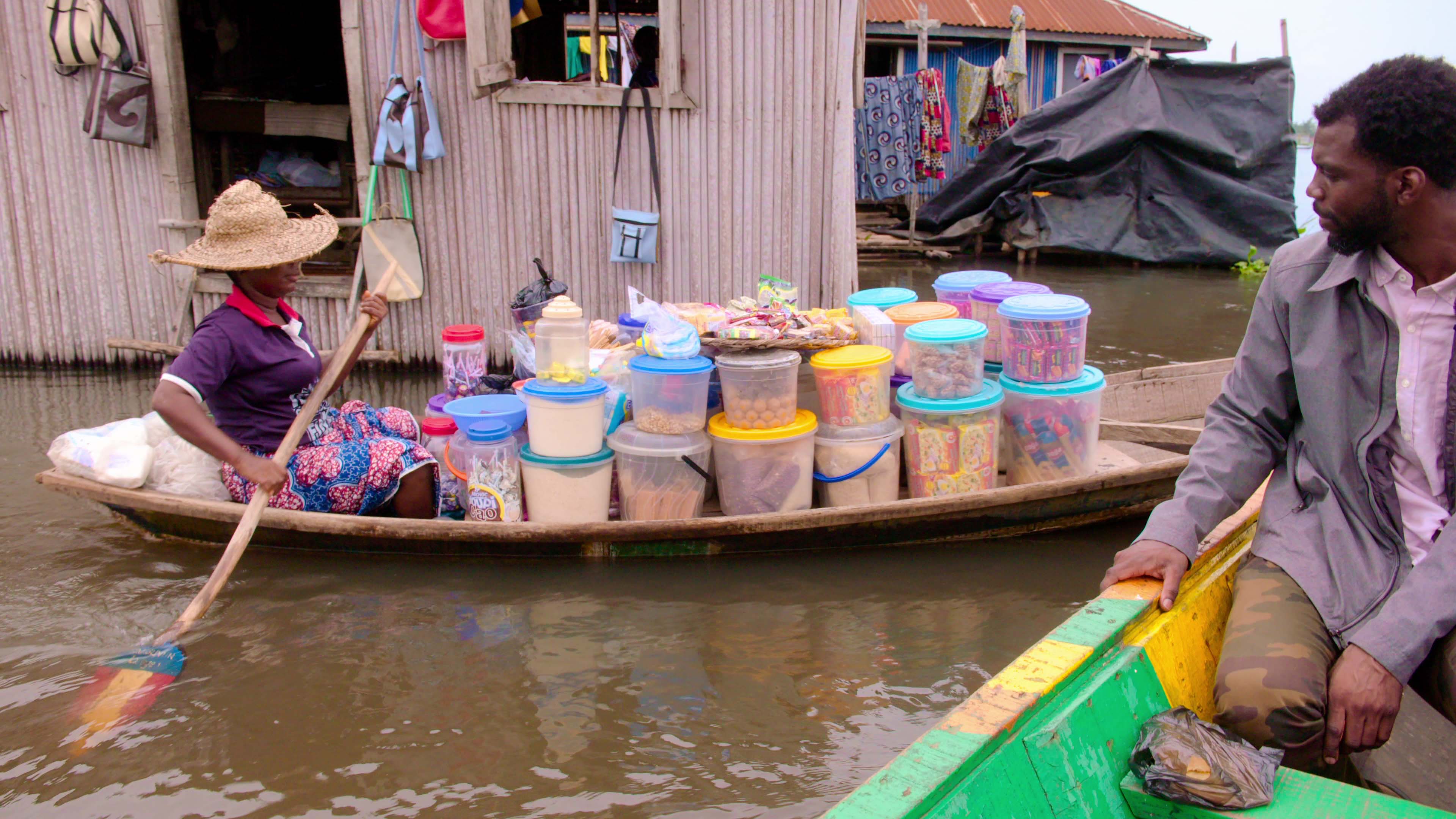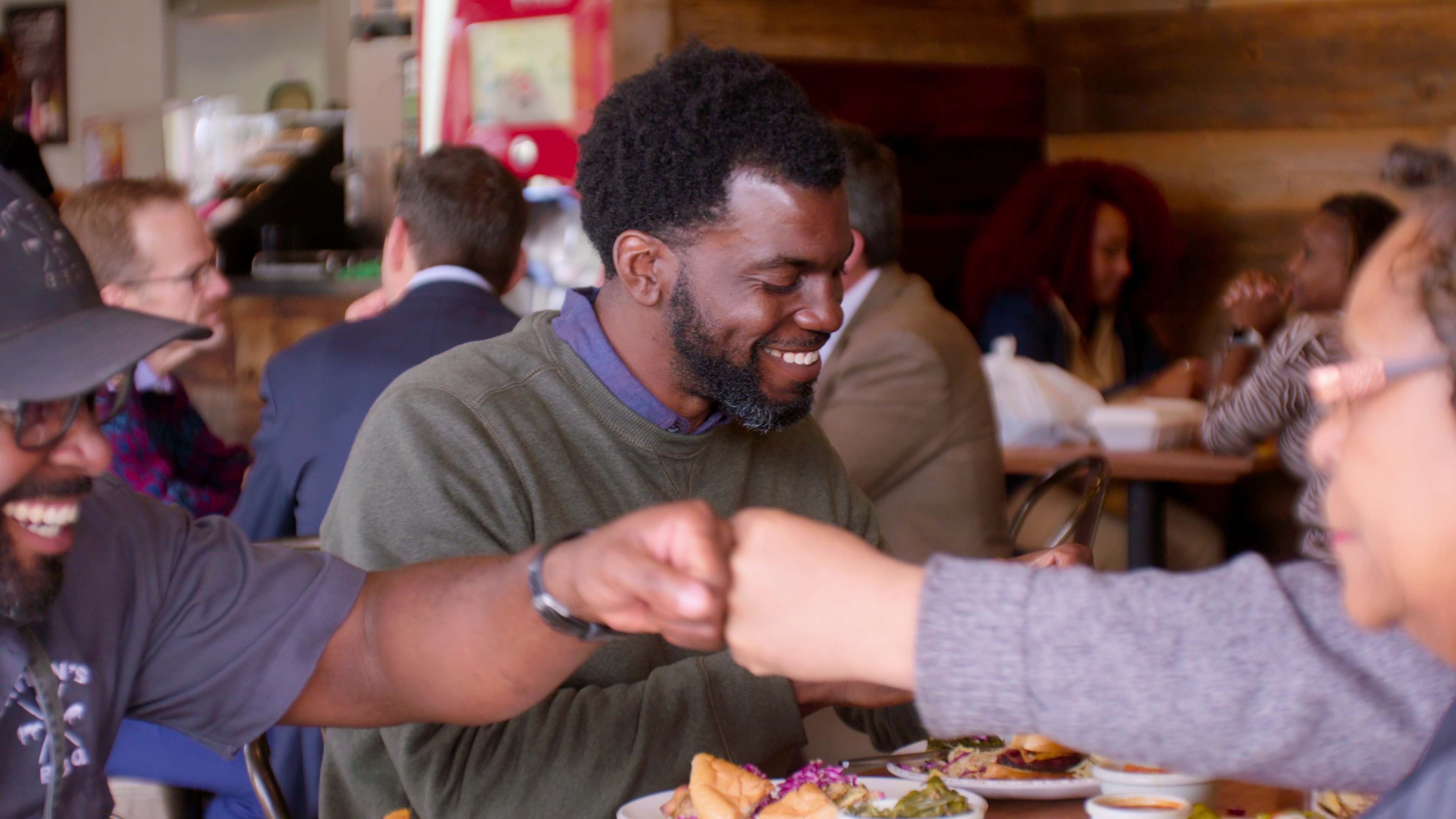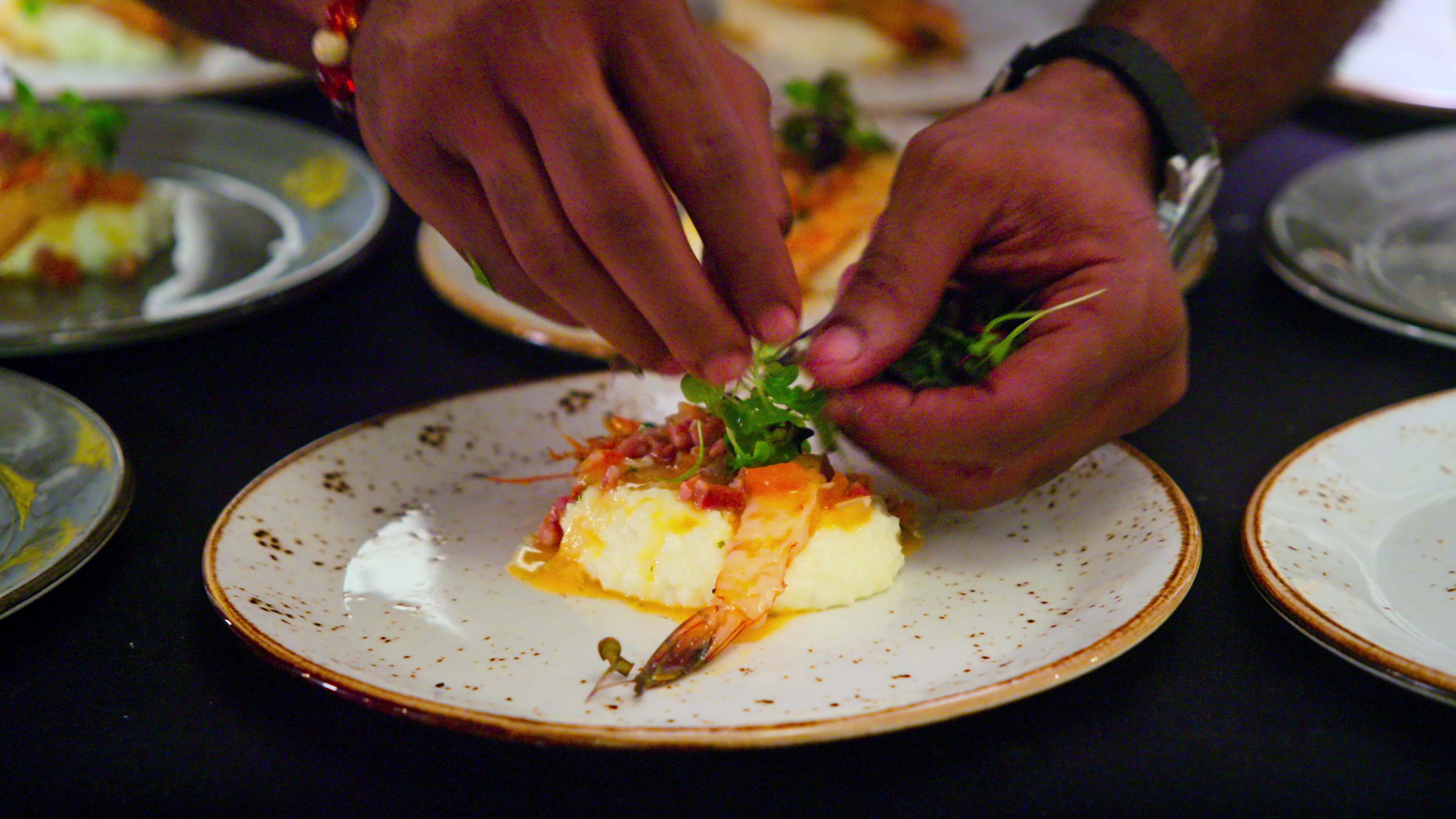Back in 2015, Netflix helped usher in our current food TV moment when they launched Chef’s Table. The idea of creating a food docuseries that told the story of the people behind food wasn’t new by any stretch, but the quality and the depth of that genre remained relatively narrow. It’s made up a ton of ground in the past half-decade, with the Chef’s Table empire growing and encompassing a wider range of cultures and stories while new shows also seek to give food the prestige TV treatment.
On May 26th, Netflix is adding another essential food docuseries to the genre they helped build with High on the Hog: How African American Cuisine Transformed America. At its core, High On The Hog is based on the historical work of Dr. Jessica Harris and her book of the same name. The show takes four key elements of Dr. Harris’ book to create a four-part series, with Oscar-winner Roger Ross Williams running the show and chef, writer, and food historian Stephen Satterfield taking on hosting duties.
High on the Hog tackles how the African diaspora informed modern American cuisine and culinary regions through slavery, reconstruction, and the 21st century African American experience. To do so, it goes back to Western Africa — Benin, specifically — with Dr. Harris to dive into the food culture there, then ties those communities back to American foodways, especially in the South. In doing so, the series goes far beyond just drawing lines between West Africa and America’s South. It also walks the audience through how enslaved African chefs helped form the foundations of what would become modern Euro-American cuisine — from Thomas Jefferson’s mac and cheese and vanilla ice cream to the contributions of Black line cooks, farmers, ranchers, chefs, and street vendors since 1619.
The only real misstep with the show that drew my attention — as an Indigenous American who also works as a chef and is keenly interested in food history — was the lack of any connective tissue tying the core Indigenous American ingredients in African and African American cooking to their North American roots and the exchange between Indigenous Americans and African cultures that inform the food we eat today. Corn, tomato, chili pepper, peanut, and so many other Indigenous American dishes and ingredients have become staples in both the Beninese cuisines and African American cuisines specifically highlighted in the series. It would have been interesting to dive into those connections. Perhaps that irritation isn’t so much a shot at this show as it is a desire for more shows like it. I would love to see Dr. Harris and Satterfield dive into Indigenous food history and how it informs “American” foods to this day (topics near and dear to both Dr. Harris and Satterfield).
That issue aside, High On The Hog still plays out with a depth that feels truly important in our current social and political landscape while also retaining Chef’s Table‘s trademark of making food at all levels of the dining experience look genuinely beautiful. To talk through the origin, production, and takeaways of the series, we hopped on a call with chef and host Stephen Satterfield. Check our conversation, below.

Can you give us a little bit of background on how you came to look at food through a historical lens?
I would say that perspective came through the wine industry, and specifically from my education as a sommelier in my late teenage years and early twenties. That perspective is really based on this kind of founding principle in the world of wine called “terroir.” It’s a French word that basically speaks to all of the environmental conditions plus the human input that becomes the quality of the wine. It informs how they make acceptable quality, particularly in a historical context, to say that wine from a particular region should taste a particular way because it usually tastes like this from this place. And I found this perspective to be interesting.
I started to think about that for all kinds of food groups. For apples or Cavendish banana, for instance, why do we always see this model crop? I began to pursue an entire way of thinking about food from the perspective of origin or provenance and then developed a media company around that idea of a kind of “food anthropology.” So I think in some ways my casting for this show is in part connected to my work, deeply connected to the historical lineage, or historical framework.
You were working with Roger Ross Williams, who’s an Oscar winner. What was the process between you and the creative side of the show?
High on the Hog is based on the book by the iconic food scholar, Dr. Jessica B Harris, written in 2011. And so the rights were purchased by Fabienne Toback and Karis Jagger. And essentially through a mutual connection, I was approached by Bobby, one of the executive producers about the project. She asked me if I knew about High on the Hog, which of course I did, much of Dr. Harris’ work is similarly focused on what could broadly be called “food anthropology.” The book is a means of understanding, looking at our past, particularly of the African diaspora too, to make sense of our contemporary foodways and habits. She’s been hugely influential in my thinking, an incredible inspiration. And so I was just floored when it dawned upon me that I was actually being asked to host this series, in part alongside her.
As an Indigenous person from the Pacific Northwest, one of the things that I was curious about was that a lot of these dishes, especially African-American soul food but also in Western African cuisine are now based on ingredients that actually come from the Americas — whether it be chili peppers, corn, pineapple, peanuts, tomatoes, etc. Was there a conversation about looking at the Indigenous beginnings of these cuisines or dishes and the exchange between African and Indigenous cultures in the Americas?
Now you’re really kind of on my corner, personally. I would refer you to my company’s Whetstone magazines. We publish three times a year in print. We’re about to publish our eighth this summer. We also publish online and we cover kind of Indigenous foodways, culinary foodways, and really the migration stories around food from a global perspective. So that would be I think, a conversation for a ‘Whetstone’ interview.
As far as High on the Hog, I think the main impetus was to kind of stick to the script, but do it in a way that enlightens and breaks everything down on a new medium and to a new generation.

What surprised you on this journey while making the show?
I think what was humbling was riding with Texas trail riders, the colloquially named Black Cowboys, who have really done an amazing job of preserving their traditions. I was just floored to be in the presence of probably a hundred beautiful black people on horses as traffic pulled over and took pictures and honked their horns for us as we moved cattle. I mean, it was something I never want to forget or could forget.
I really learned that there are certain parts of our history that can only be understood in experiential ways. Even though I had read about the influence of Black Cowboys in Texas and read about the trail ride, being in their presence really made clear for me how much work and how much love went into preserving their culture.
Growing up in Atlanta, I think the way in which I understood Black culture or actually African-American culture, was really limited. It was humbling for me to see this completely new expression of a beautifully preserved iteration of Black history and culture that I had only read about.
Modern African cuisines are making an impact in American right now. You have wonderful West African restaurants in Portland and East African restaurants in Columbus and Minneapolis and many more. Where do you see the influence of those cuisines on modern American eating today? Is it becoming something that’s more tangible for the average eater or do you still feel like it’s a bit of a diaspora for the migrant communities rather than breaking through to the average American eater?
It’s more tangible than ever and will become increasingly more tangible. That’s the exciting part about the moment that we are in today. You may not see it in every town in the U.S.A. But what you very likely will find in every town is a young enterprising chef, probably in their twenties, doing a pop-up from a particular part of the world in your town, especially in the post-pandemic. And through that, more diverse foods are more accessible than ever. And if they are not financially accessible or geographically accessible, if you have a smartphone, you can find any food. I think it’s the main way that people follow food now.
As a graduate of culinary school, the curriculum is not exclusively rooted in French cuisine, but close. It’s so astonishing to think about our entire framework for restaurants in the United States, the way that we set up our kitchen, the way that we talk about it, or if its quality is based on that framework.
Fortunately, I think my generation is probably the last to fully buy into that. And I think the younger generation coming up now won’t because there’s access to so much information and so much inspiration out there that’s in our pockets all the time. We’re starting to see that knowledge exchange and specialization in the food sector. And I think that’s a really positive and exciting turn.
Absolutely. How would you go about introducing someone to, say, Ghanan cuisine or the core dishes of Benin’s food scene that we saw in the show?
Personally, I would not be making those introductions. I would be making an introduction to the proprietor at the restaurant or someone with a great deal more knowledge than me. I’m not an expert in those particular countries. And I think it’s a really important kind of intellectual diction. Context is extremely important and, all too often, what we do see are incredibly broad strokes. So, what I try to do in my work is very much not be an expert or to purport to be “the one.” But I do try to facilitate those introductions with people who have true genuine knowledge and ideally with the experience or cultural context of the things that they’re talking about, which I think is a much, much richer exchange and way better value proposition for whoever’s going to be joining that table.

Of all the dishes that you tried throughout the show, is there a single dish, food, or ingredients that you’ve brought back home with you and folded into your own cooking?
Wow, that’s so interesting. I will say one thing that wasn’t really focused on, on the show, but did change my life was the condiments. There were these hot green peppers that were pureed with garlic and some other spices that I don’t know. It was like a paste and it was on the table at every restaurant we went to in Benin for every meal, and it was hotter than hell. It was so flavorful and so good.
So before we left, our showrunner, Susannah Guy, went on this amazing expedition, calling friends of friends of friends who had relatives there so we could get this hot sauce by the gallon before we rolled out.
We really, really fell in love with that hot sauce. I’ve been trying to replicate this green, beautiful paste puree that was at every table, and I’ve not managed to do it. I think it has to do with the peppers and me. But, yeah, that really, really stuck with me.
All four episodes of ‘High on the Hog: How African American Cuisine Transformed America‘ will be available to stream on Netflix on May 26th, 2021.







